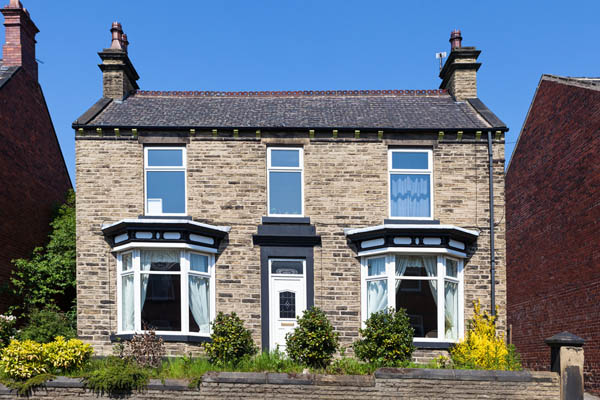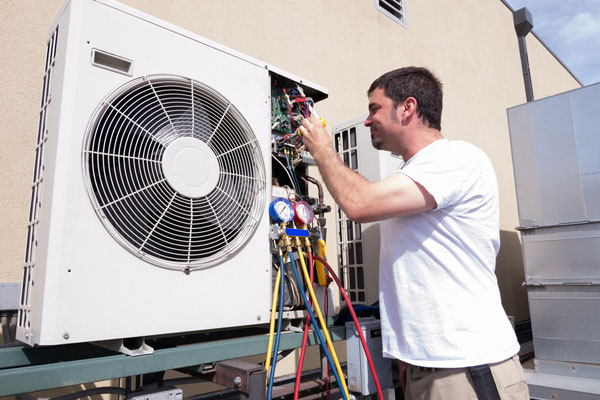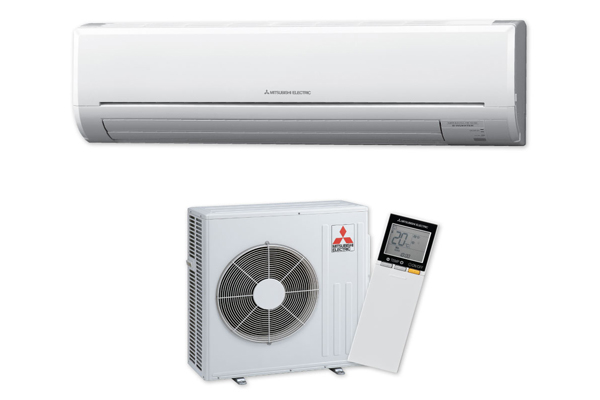The Challenges That Come With Cooling A Historic Home

Historic homes usually do not accommodate modern air conditioning systems. The layout that most historic homes have makes it more challenging to install the appropriate type and size of HVAC system. Most older homes lack ductwork and, furthermore, the installation of ductwork often requires major reconstruction work. Very often, this affects the aesthetic and historic value of the structure. Historic homes also do not have reliable insulation that will create the ideal environment indoors. Fortunately, there is a type of AC system that will work best for a historic home – the ductless air conditioning system. It not only provides energy-efficient comfort all-year-round but it can also preserve the structure of an older home.
Understanding Ductless Mini-Split Systems
Table of Contents
A ductless mini-split system is one of the more popular types of heating and cooling equipment. A feature that is unique to this system is its personalized temperature control that allows independent heating or cooling for different rooms or zones. A mini-split system is composed of the evaporator or indoor air handler and the condenser or outdoor compressor. These units are connected by a conduit. A ductless mini-split may have multiple indoor air handlers, depending on the number of rooms or zones that need to be served. Likewise, you can install a single zone, where there is one indoor air handler and one outdoor compressor. These systems are extremely energy efficient and improve indoor air quality due to their advanced filtration systems. Many homeowners enjoy an improved level of comfort while paying minimal home heating and cooling costs.
How Ductless Air Conditioning Can Benefit A Historic Home
There are many reasons why a ductless mini-split is the perfect solution to cool a historic home. Here are some of its benefits:
Energy-Efficient

In ducted systems, at least 25% of energy can be lost in the network of ducts when the AC is running. Traditional window ACs are also not as efficient compared to ductless systems, which means they have high operating costs. With ductless mini-splits, you can enjoy the benefits that inverter-based compressors can offer. These compressors are more efficient since they can either speed up or slow down based on the cooling/heating needs of a room or zone. Other types of HVAC compressors have to turn off and turn on to keep the system operational. This cycle of shutting down and starting up uses more energy – something that you do not have to contend with when you use a ductless AC system for a historic home.
Another advantage of ductless units is that they can be shut off in unused rooms or zones. This means you do not have to pay to heat or cool unused rooms. Central AC units do not have this feature.
Lower Heating And Cooling Costs
Because ductless ACs are energy-efficient, they can be used at a lower cost. These systems boast of some of the highest SEER ratings in the industry. Keep in mind, however, that the operating cost will depend on the size and capacity of the model installed, along with the number of units and hours it is used. As mentioned above, since you can turn off a ductless AC in unoccupied rooms, you can enjoy lower costs due to energy saved.
Indoor Air Quality

Ductless systems rely on advanced multi-stage filtration to promote good indoor air quality or IAQ. Regardless of how often you clean or vacuum, dust, and other particulates will accumulate. This is a concern particularly in homes that have ductwork. When a ducted system is turned on, it will release the particulates through the vents. Window ACs are no better because they can create an environment that encourages the growth of mold, mildew, and bacteria, all of which affect the quality of indoor air. Ductless systems, however, do not have these issues.
HVAC Zoning

Zoning allows for individualized temperature control of zones or rooms that are grouped depending on preferred temperature. The kitchen and pantry, for example, can be assigned as one zone while the upstairs bedrooms can be assigned as another zone. You can then set a lower temperature for the first zone and a higher temperature for the second zone based on your comfort preferences. Because zones are independently controlled, it is possible to have different settings for each. As a result, you can enjoy optimum indoor conditions without having to forego your personal comfort.
Quiet Operation
Another reason why ductless systems are the best choice for a historic home is its whisper-quiet operation. Indoor units are connected to small tubes that distribute conditioned air, producing barely audible and very low noise. Traditional ducted systems, on the other hand, have large ductwork that is notorious for producing noise. Window ACs are no better because they tend to be loud and noisy as well.
Ease Of Installation

Most HVAC technicians will agree that ductless mini-splits are quite easy to install. For one, they do not require a lot of backbreaking labor work. Only a small hole is drilled through the wall to allow the conduit through. Otherwise, the rest of the house remains intact. A central AC system, on the other hand, will require ductwork installation which is not only costly but will also affect the original structure of a historic home.
Environmentally Friendly
Ductless AC systems are energy efficient, which means they do not consume as much energy as window ACs and conventional AC systems. Manufacturers also use a type of environmentally-friendly coolant for ductless systems. As such, you are assured of comfort that does not impact the environment.
Will A Ductless Air Conditioner Affect My Historic Home’s Structure?
A key advantage of ductless air conditioning is that there is no need to get ductwork installed. This is good news for owners of historic homes. Ductwork installation often requires costly and extensive construction work that will impact the aged structure of a historic home. To install ductwork, technicians have to tear down ceilings and walls before rebuilding them. With a ductless system, all that a technician has to do is to drill a three-inch hole through a wall to allow for the connection of the indoor and outdoor units. The compact size of ductless ACs also allows them to be installed virtually anywhere.
Can I Use Window ACs Instead?

Unfortunately, many homeowners feel that window ACs are a common solution for many cooling problems. However, window ACs do come with their host of problems. First, you will likely require a good-sized hole made through a wall to make room for the unit. Otherwise, you could place the window AC on a window ledge. Here is the problem: holes in the wall and tiny open spaces in windows make your historic home inviting to pests, rodents, and burglars. Window ACs are also easy to uninstall, which leaves the hole or window where they were placed vulnerable. Furthermore, window-type ACs tend to block natural light. In winter, they might have to be removed for storage. Plus, they do produce noise and increase the risk of mold and mildew growth, affecting indoor air quality. They come with a low initial cost but, since they are so inefficient, they actually cost more in the long run.
Conclusion
Your historic home is likely one in a million. As such, it must be preserved and well-maintained so it will retain its looks and value. Historic homes are a heating and cooling challenge but when you have ductless air conditioning to do the job, you should not have problems at all. Ductless AC systems are effective, efficient, and can keep your historic home looking like it did in its heydey. If you think this is the best solution for you, talk to a trusted HVAC company about your options.
How Hart Home Comfort Can Help

Hart Home Comfort has been the area’s leading provider of heating and cooling services for many years. Our NATE-certified technicians are the best in the industry, capable of providing you with a full line of HVAC services, from installations and replacements to tune-ups and repairs. Our rates are the most competitive in the region and we ensure that we provide you with the best solutions for your historic home while working within a set budget. If you want to know how we can help you enjoy energy-efficiency, indoor air quality, and comfort, call Hart Home Comfort today for an in-home estimate at no cost.
For any questions about what Hart Home Comfort can do for you, give us a call today. Click here to contact us now or call us at (631) 667-3200 to find out more!
